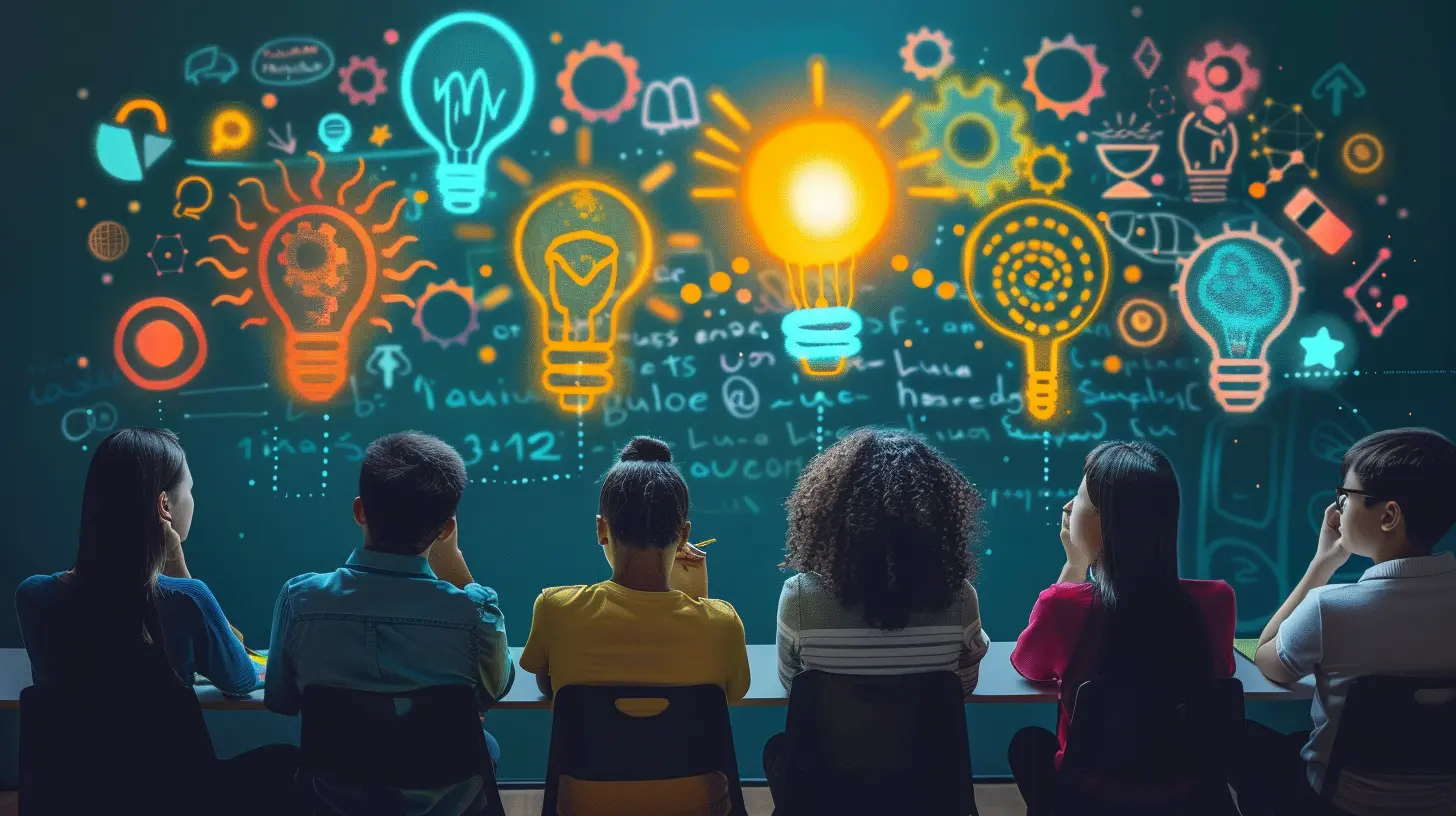Using Feedback Loops to Keep Students Invested in Learning
3 October 2025
Keeping students engaged in learning can be a real challenge. With distractions everywhere and attention spans shrinking, how do we ensure students stay motivated? One of the most effective strategies is using feedback loops. These loops help maintain interest, encourage progress, and create a sense of achievement. But what exactly are feedback loops, and how can educators use them effectively?
Let’s dive into how feedback loops work and why they are critical for keeping students invested in their learning journey.

What Are Feedback Loops?
A feedback loop is a process where a student’s action gets a response, allowing them to adjust and improve. It’s like the GPS in your car—when you take a wrong turn, the system recalculates and helps you find the right path.In education, feedback loops involve continuous communication between teachers and students. This feedback can be immediate or delayed, formal or informal, but the goal remains the same: guiding and motivating students toward improvement.
There are two primary types of feedback loops:
1. Positive Feedback Loops: These reinforce good behavior and progress. When students receive praise for their effort, they are more likely to continue putting in the work.
2. Negative Feedback Loops: These help correct mistakes without discouraging students. Instead of simply pointing out what’s wrong, this type of feedback provides constructive guidance to help students improve.
Both types play a crucial role in shaping a student’s learning experience.

Why Feedback Loops Matter in Education
1. Boosts Motivation and Engagement
Imagine playing a video game where you had no idea how well you were doing—no score, no progress bar, nothing. You’d probably lose interest quickly, right? Learning works the same way.Regular feedback gives students a sense of direction. When they see progress and receive recognition, they’re more motivated to keep going. Feedback creates a connection between effort and improvement, making learning feel more rewarding.
2. Encourages a Growth Mindset
Carol Dweck’s research on growth mindset proves that students who believe they can improve through effort are more likely to achieve success. Feedback loops reinforce this idea. By showing students how their hard work leads to improvement, teachers help build resilience and a love for learning.3. Provides Clarity and Direction
Without feedback, students may feel lost. They might not understand what they are doing right or wrong. Feedback acts as a compass, showing them where they are, where they need to go, and how to get there. This clarity boosts confidence and reduces frustration.
How to Implement Effective Feedback Loops
Creating an effective feedback loop isn’t just about pointing out mistakes or giving praise. It requires strategy. Here are some practical ways teachers can build feedback loops into their classrooms:1. Make Feedback Timely
Feedback loses its impact if it comes too late. Imagine submitting an assignment and getting feedback weeks later—you’d probably forget half of what you wrote. Timely feedback allows students to reflect while the work is still fresh.Practical Tip:
- Try providing quick verbal feedback during class discussions.- Use technology to deliver instant feedback through quizzes or learning platforms.
2. Be Specific and Actionable
Vague feedback like “Good job!” or “Needs work” doesn’t help much. Students need to know exactly what they did well and how they can improve. Specific feedback ensures they understand their progress and what to do next.Practical Tip:
- Instead of saying, “Your essay needs improvement,” try, “Your argument is strong, but adding more examples would make it even more convincing.”3. Encourage Self-Assessment and Peer Feedback
Feedback doesn’t always have to come from the teacher. Encouraging students to assess their own work and give feedback to peers fosters critical thinking and self-improvement.Practical Tip:
- Use rubrics and checklists to help students evaluate their work.- Organize peer review sessions where students exchange feedback in a structured way.
4. Balance Positive and Constructive Feedback
Too much negative feedback can be discouraging, while too much positive feedback can prevent growth. The key is to strike a balance. Think of it as a sandwich—start with praise, then provide constructive criticism, and end with encouragement.Practical Tip:
- Recognize effort along with achievement. Instead of just praising the final product, acknowledge the hard work behind it.5. Utilize Technology for Instant Feedback
Technology can make feedback loops faster and more efficient. From AI-powered grading tools to real-time quiz apps, technology allows students to receive immediate insights into their performance.Practical Tip:
- Use apps like Google Forms, Kahoot, or Quizizz to provide instant feedback on quizzes.- Platforms like Google Docs enable real-time comments, making feedback more interactive.
6. Create a Safe and Supportive Environment
Students need to feel safe to accept feedback without fear of embarrassment or judgment. When feedback is framed as a way to help rather than criticize, students become more open to learning.Practical Tip:
- Normalize mistakes as part of the learning process.- Encourage a classroom culture where feedback is seen as a tool for improvement, not punishment.

Real-World Example of Feedback Loops in Action
Let’s imagine a high school English teacher, Ms. Wilson, implementing feedback loops in her writing class.1. Initial Assignment: Students submit a rough draft of their essays.
2. Teacher Feedback: Ms. Wilson provides specific, constructive feedback within a day.
3. Peer Review: Students exchange essays and provide structured feedback using a rubric.
4. Self-Reflection: Each student identifies areas they will improve based on feedback.
5. Revision and Resubmission: Students make necessary changes and submit a final draft.
6. Final Feedback: Ms. Wilson provides final comments, highlighting improvements and suggesting next steps for growth.
Through this process, students stay engaged, understand their progress, and actively work toward improvement.
Common Mistakes to Avoid When Using Feedback Loops
Even with the best intentions, feedback can sometimes miss the mark. Here are a few common mistakes educators should avoid:- Being Too Vague: Generic comments lack impact. Always be specific.
- Overloading Students with Feedback: Too much feedback at once can be overwhelming. Focus on key areas.
- Delaying Feedback: The longer the delay, the less effective the feedback will be.
- Only Focusing on the Negative: Always include positive reinforcement to maintain motivation.
Final Thoughts
Feedback loops are a powerful strategy to keep students invested in learning. When done right, they provide motivation, direction, and a sense of achievement. Whether through quick verbal praise, peer assessments, or tech-driven feedback, finding the right approach can make a huge difference in student engagement.As educators, our goal is not just to teach but to inspire continuous growth. Feedback loops help bridge the gap between effort and success, making learning a journey that students want to stay invested in.
So, are you ready to create stronger feedback loops in your classroom? Start small, stay consistent, and watch your students thrive!
all images in this post were generated using AI tools
Category:
Student EngagementAuthor:

Zoe McKay
Discussion
rate this article
1 comments
Zevros James
This article sparks my curiosity! How exactly do feedback loops enhance student engagement? I'm eager to learn more about practical strategies and real-life examples that demonstrate their effectiveness in the classroom.
October 19, 2025 at 4:53 AM

Zoe McKay
Thank you for your interest! Feedback loops enhance student engagement by providing timely, specific responses that help learners understand their progress and areas for improvement. Practical strategies include regular check-ins, peer reviews, and incorporating student reflections. Real-life examples, such as using digital platforms for instant feedback, show how these approaches can boost motivation and involvement in the learning process.


